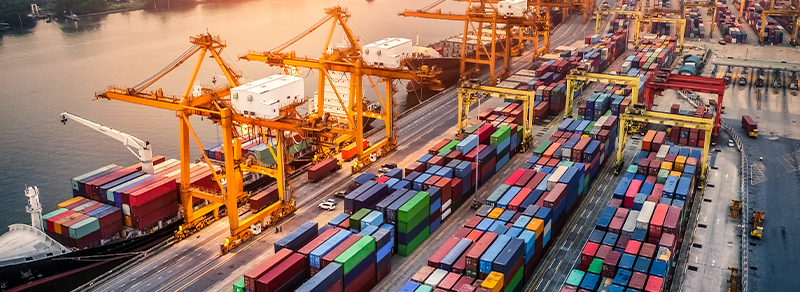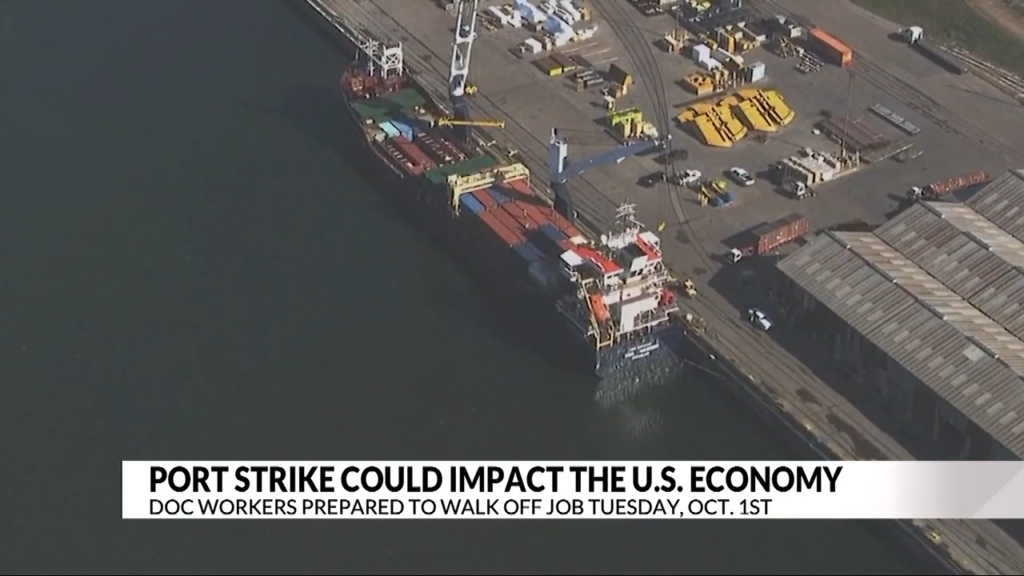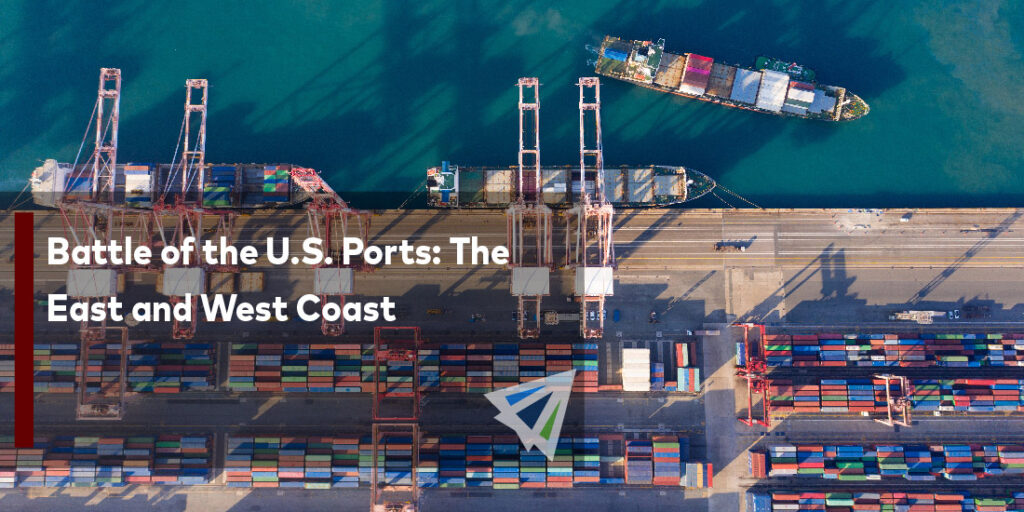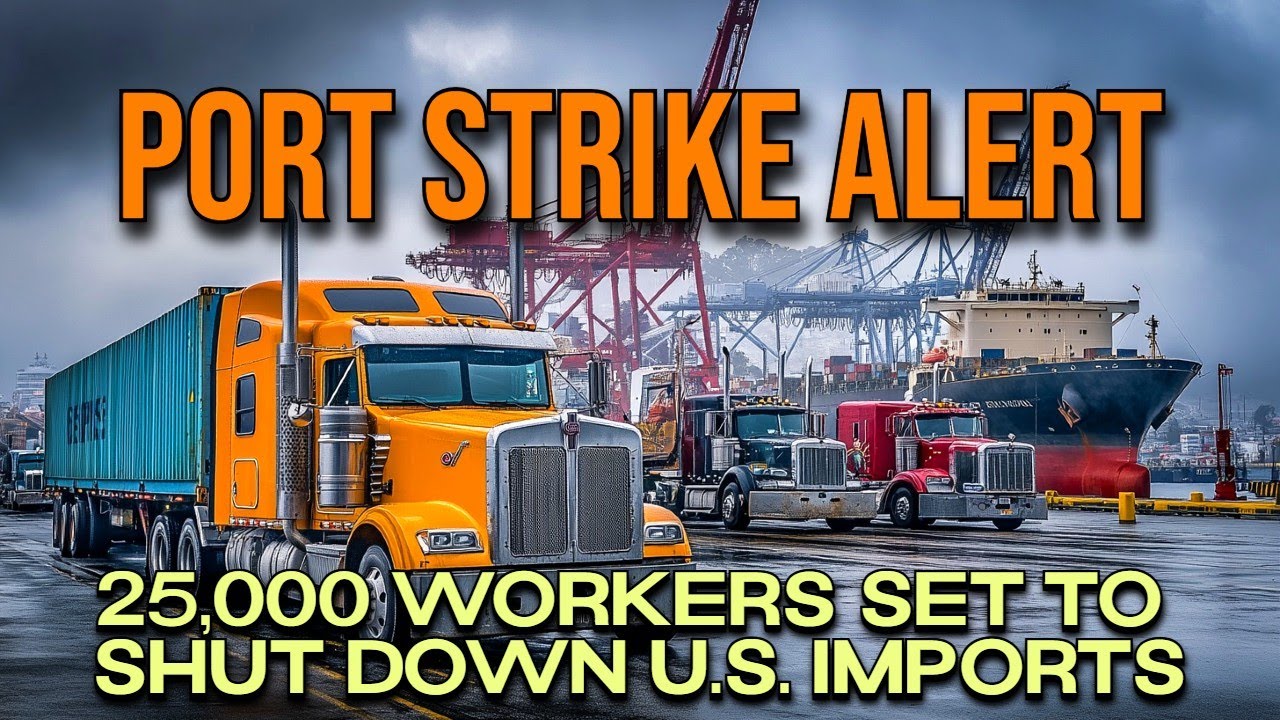The looming port strike in 2024 is poised to severely impact the U.S. economy, with far-reaching effects across industries. As negotiations between port operators and dock workers continue to falter, businesses are bracing for significant disruptions that could undermine the stability of the supply chain and elevate inflationary pressures.
Global Supply Chain Disruption
A port strike would cripple the U.S. supply chain, which relies heavily on the smooth functioning of major ports for the import and export of goods. Industries that depend on fast inventory turnover—such as manufacturing, automotive, and pharmaceuticals—could experience delays that could last weeks or even months. The longshoreman strike would also affect international trade partners in Asia and Europe, resulting in shortages of essential products like electronics and medical supplies. The strike’s consequences could ripple globally, with the most affected areas being the busiest U.S. trade hubs.

Economic Implications for the U.S.
The port strike in 2024 is expected to have significant economic consequences. Experts predict that every day of work stoppage will lead to supply shortages, driving up costs for businesses and consumers. The inflationary pressure caused by these shortages could push prices back to levels seen during the height of the COVID-19 pandemic. Moreover, the Federal Reserve would have limited tools to address inflation caused by supply-side disruptions like a dock workers’ strike.

Impact on Small and Medium-Sized Businesses
Small and medium-sized enterprises (SMEs) are particularly vulnerable to the strike. Many SMEs rely on just-in-time inventory management, meaning even a few days of delayed shipments could disrupt their operations. For those that import goods, the port workers’ strike could create severe cash flow issues, leading to potential closures or bankruptcies.

Regional Impacts: East vs. West Coast Ports
While the West Coast ports are expected to face the brunt of the port strike, East Coast ports are also preparing for an influx of traffic. Ports on the East Coast are extending hours and setting strict deadlines for container movements in anticipation of the shutdown. These ports could see increased congestion, with ocean carriers imposing higher fees for East Coast-bound shipments. The longshoreman strike will also disrupt key trade routes from Asia, causing massive delays in the arrival of essential goods.

Consumer Market Effects: Holiday Shopping Concerns
One of the most concerning aspects of the port strike is its timing. Occurring ahead of the holiday season, the strike could delay the arrival of consumer goods and lead to shortages. This would force retailers to raise prices or face stock shortages, reducing the availability of products during the busiest shopping season. The strike threatens to negatively affect the retail industry, with customers likely to see fewer discounts and higher costs.
Labor Union Negotiations and Stalemate
The deadlock between labor unions and port operators revolves around issues such as automation, wages, and working conditions. The longshoreman strike is part of broader labor unrest across various sectors, as unions push for better terms in an increasingly automated environment. However, this stalemate could further exacerbate tensions if the strike continues without resolution. Union leaders have warned that their workers are prepared to strike for as long as necessary, which could leave ports non-operational for weeks.
Government and Policy Responses
Despite calls from business groups and trade associations for the Biden administration to intervene, the government has been reluctant to invoke the Taft-Hartley Act, which could force the end of the strike. However, as the economic impact of the port strike grows, pressure on the administration will likely increase. Federal intervention may become necessary if the strike drags on, potentially causing long-term harm to the U.S. economy.
Logistics and Shipping Companies’ Contingency Plans
Shipping companies are already preparing for the worst by halting new export bookings and imposing significant surcharges on East Coast-bound containers. These fees are expected to further burden businesses reliant on imports. The dock workers’ strike could also lead to increased freight rates and a shortage of containers, creating additional hurdles for global trade.
International Ramifications: Europe and Asia
Ports in Europe and Asia are preparing for delays as they anticipate the consequences of the port strike in 2024. Empty container shortages are expected to spread from U.S. ports to key global trade hubs, slowing down production lines and raising costs in industries ranging from electronics to automobiles. The interconnectedness of the global economy means that even short-term disruptions at U.S. ports will have far-reaching consequences.
The Role of Inflation and Market Volatility
The inflationary pressure caused by the port strike could push consumer prices higher, with some experts predicting a return to the inflation levels seen at the peak of the COVID-19 pandemic. With limited ability to intervene, the Federal Reserve may struggle to control this supply-side inflation. The dock workers’ strike could also create volatility in financial markets, especially for companies reliant on global supply chains.
Future Outlook: Economic Recovery or Prolonged Recession?
In the best-case scenario, the port strike 2024 will last only a few days, allowing for a relatively quick recovery of supply chains. However, a prolonged strike lasting weeks or months could lead to widespread economic disruption, pushing the U.S. toward a deeper economic downturn. Businesses are already preparing for the worst, with some adopting contingency plans to mitigate the impact of the strike.
Conclusion
The impending port strike poses a significant threat to the stability of the U.S. economy and businesses. From supply chain disruptions to inflationary pressures and potential bankruptcies, the consequences could be severe and far-reaching. As labor unions and port operators remain locked in negotiation, businesses and consumers alike are preparing for the uncertain weeks ahead. Whether through government intervention or a swift resolution, the end of the strike will be critical to restoring normalcy to the economy and preventing further damage.





